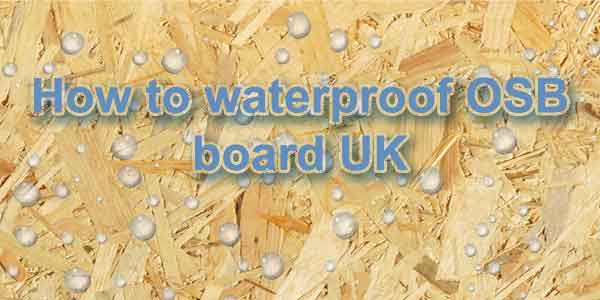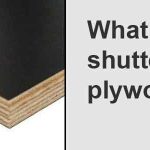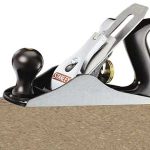In this article, we will be looking at ways to waterproof OSB (orient strand board). Whilst this product is already quite water resistant, it is not fully waterproof. This means, it will deteriorate over time if it is exposed to high levels of water.
OSB is an engineered sheet material, made from chips of wood combined with synthetic resin adhesives. It is the adhesive that gives it water-resistant qualities. However, it is still wood, which means it can soak up moisture and degrade over time.
In terms of strength, durability, and moisture resistance, it is similar to plywood. However, the manufacturing process is different.

When OSB is made, small chips of wood are soaked in adhesive, this is then compressed in a thermal press, which activates and cures to a hard, solid finish.
The way woodchips (or strands) are oriented looks quite uneven. However, it is aligned differently in different layers. As a result, this increases the boards strength.
Due to OSB’s strength, it is a very popular alternative to structural plywood. This is particularly true in North America, where it is commonly used in construction to create structural panels.
In the UK, OSB isn’t used as frequently as in America. However, it is still a product you will find in most builder’s merchants, or large DIY stores.
The main reason it is used less in the UK, is simply due to different construction methods. In America most property is timber frame. However, in the UK this is considered non-standard construction.
With that said, we do build some timber framed homes in the UK. When we do, the insulated panels are usually made from OSB.
It is also popular for things like making furniture, flooring materials, packing, and boarding.
Waterproofing OSB board
As we have already mentioned OSB is water resistant (not waterproof). This means it can withstand a certain level of moisture.
In the UK the main grade of orient strand board used in construction is OSB/3. This is designed to be load bearing and resistant to high levels of humidity. If you visit a builder’s merchant to buy OSB, it is very likely that it will be OSB/3.
OSB grades 0, 1, & 2, lack water resistant properties. These are intended for internal use, such as making furniture.
There is also a higher grade 4, which is a stronger material. This has similar properties to OSB 3, as it uses the same type of adhesive (Phenol formaldehyde resins). However, it has greater load bearing capabilities. Plus, it can withstand around 20% higher levels of moisture. However, even OSB/4 is not fully waterproof.
If you intend to use OSB outdoors, you will need to add additional waterproofing. The type of treatment you use will depend on the finish you require.
If you are looking for a clear finish, then your best bet is something like Roxil Wood Protection Liquid. This will completely waterproof your OSB, and it gives 10+ years of protection.
You can read more about this product and read customer reviews by clicking here
Some other options for waterproofing your OSB include:
- Stain – A good wood stain can give a nice finish to your OSB board
- Exterior wood paint – Again this can give a nice finish and allows you to colour the surface of your OSB
- Blackjack – This could be applied as a finished coat. Alternatively, you could use a blackjack felt adhesive and apply felt over the top. This would be good for a shed or some other outdoor storage where OSB is used.
Ensure that you fully seal your OSB
However you decide to treat your OSB, you should make sure you seal all edges. This includes the front and back face of the board, as well as all the edges. By doing this, you are completely sealing the board and stopping water from soaking into the wood.
Another important thing to remember, is to reseal any cuts. Depending on how you are using the OSB, there is a chance you will need to cut the boards.
If you seal the boards first and then cut them, you have provided a route for moisture to enter the board. In order to avoid this, you will need to seal any cuts with your chosen wood sealer.
If water can soak into the sheet through a cut, or an area that has not been sealed, it will ruin the board. Even a small area that is not sealed will quickly soak up moisture. This will cause the board to swell and deteriorate.
A fully sealed board, can be the difference between a sheet that lasts outdoors for 10+ years and one that needs replacing in the next one year.
Conclusion
OSB is a popular engineered wood, and it has several benefits, including strength and moisture resistance. This makes it a popular alternative to plywood, at a slightly lower cost.
However, just like plywood, OSB is not fully waterproof. This means you will need to a add additional waterproofing treatments if you intend to use this product outside.




